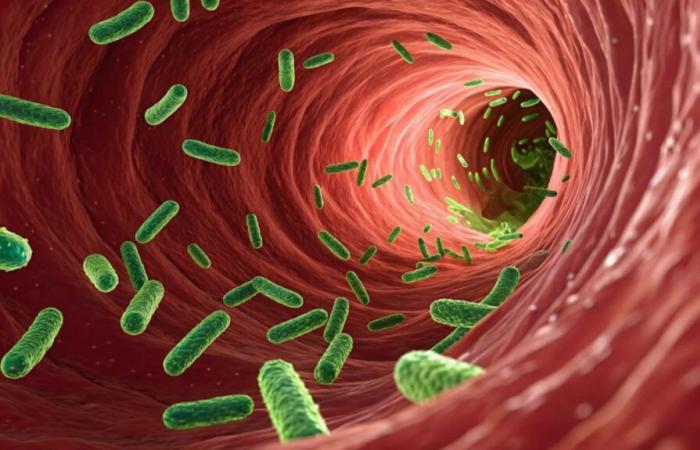By Valérie Lannoy, post-doctoral student in microbiology, Sorbonne University
It is difficult to do our shopping without being offered products to protect our microflora! Our body harbors ten times more bacteria than cells. Really ?
Nobeastsofierce/Shutterstock
The microflora or microbiota is the set of microorganisms that normally reside in our body. Its secrets were popularized by Dr. Giulia Enders in her book “The discreet charm of the intestine”.
This bestseller has largely contributed to the enthusiasm around the subject! However, the discovery of intestinal microflora is more than a century old. We owe it to the microbiologist Élie Metchnikoff, Nobel Prize winner in medicine in 1908. Over time, technological advances have facilitated the study of the microbiota, and it was in 1977 that the famous ratio of one human cell per ten bacteria was published. by the American microbiologist Dwayne Savage.
Quantities of microbes and cells that are difficult to measure
In 1972, biochemist Thomas Luckey estimated that each gram of human stool contained one hundred billion bacteria and that the digestive tract contained one kilogram of them. By multiplying, and considering that the majority of bacteria are housed in the feces, the estimate of the quantity in the body was therefore 100,000 billion bacteria. In 1977, Professor Savage’s team compared this number to the number of human cells (10,000 billion), hence the famous ratio. This one in ten ratio quickly spread throughout the community scientistbecause it is easy to remember and makes concrete the concept of intestinal microflora. The ratio is still disseminated in the prices of biology or extension activities.
Nearly forty years later, in 2014, microbiologist Judah Rosner published a letter in the former scientific journal “Microbe” to question the intangible proportion of one in ten. The beginning of his text is also interesting and reveals a paradox: “The science is governed by a critical reanalysis of facts. […] But once a fact enters the scientific literature, after a while it becomes difficult to erase.”
Professor Rosner points out that the estimate of 10 trillion cells first came out in a book in 1970, but the information is not referenced there. He also warns that assessing the quantity of human cells is actually a challenge. He concludes that, even if the ratio were to be contradicted, this would not call into question the involvement of the microbiota in human health.
A question of method
Two years after the letter mentioned, Israeli work refuted the unshakable ratio. Professor Ron Milo’s team selected the organ whose number of bacteria was representative of the bacteria in the body. The microflora of the mouth, lungs or skin was not counted, because the quantity of bacteria there is a hundred times less rich than in the large intestine. They took into account that the colon contains 400 grams and not a kilo of fresh stool. Next, the team was inspired by an Italian scientific article, which evaluated the number of human cells, not globally, but organ by organ since the sizes and masses of cells vary greatly throughout the body.
The number of human cells then becomes three times higher, or 30,000 billion. The proportion of bacteria per cell is thus refined to 1.3. Although less than 10, the ratio is greater than 1, so the bacteria remain superior in number. However, each time you defecate in the toilet, it rebalances and it is the human cells that become more numerous!
Viruses, bacteria and protozoa populate our body
We are talking about bacteria, the most analyzed component of the intestinal microbiota today. However, it does not express all the complexity of your microflora. Bacteria, yeasts, protozoa (microscopic animal with a single cell) and viruses, this is the harmless little world that you host! Our “virobiota” has long been considered to represent the overwhelming majority of the organism.
In 2021, studies are revising this data downward, and bringing the number of viruses in our body closer to that of bacteria. Therefore, these numbers are similar to human cells. But don’t forget that when you add them up, bacteria and viruses grouped together are in the majority!






